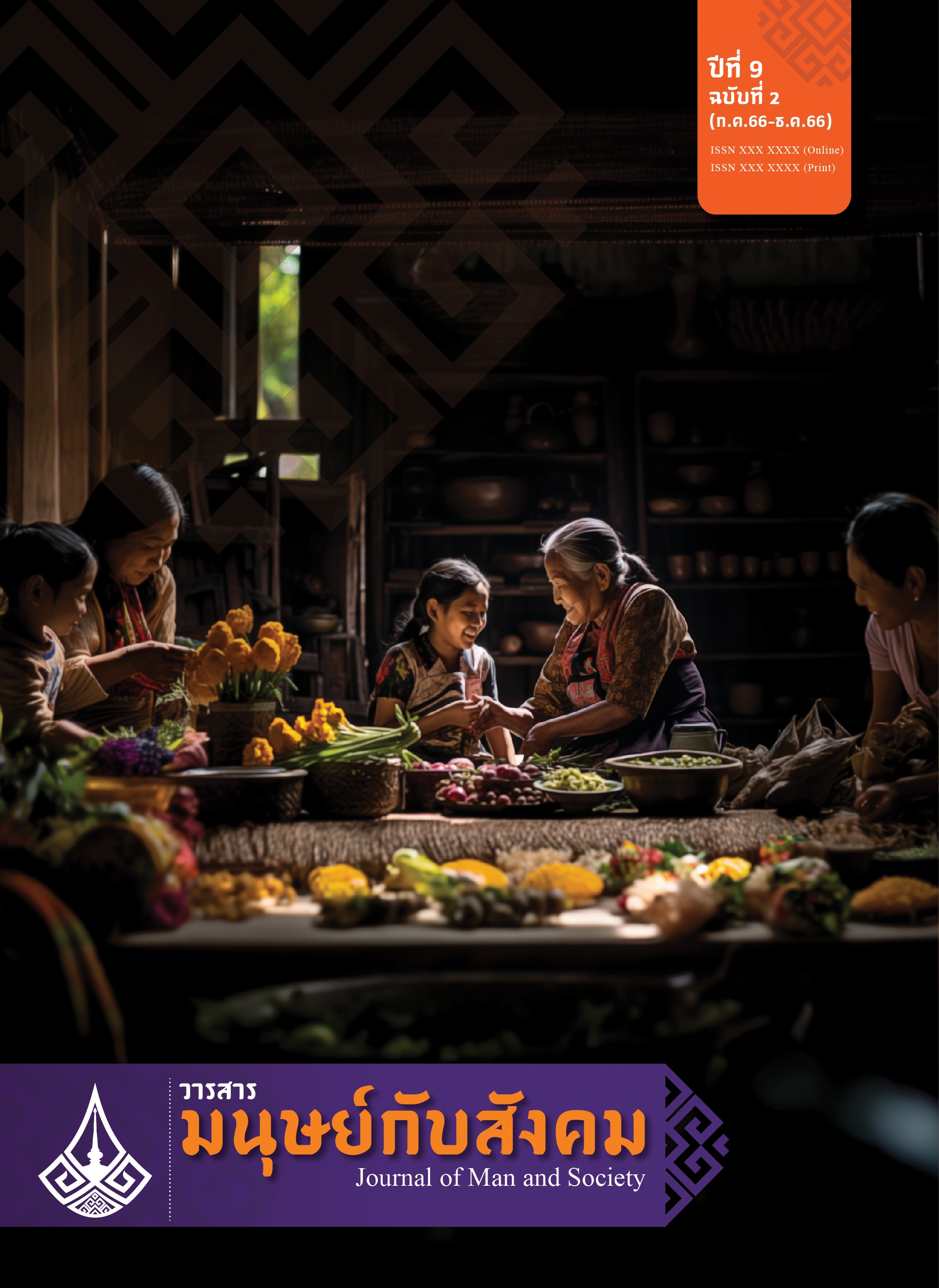The Development of Social Capital to Strengthen the Community Empowerment A Case Study Culture Village Phu Tai Ban Khok Kong in Kuchinarai District Kalasin Province
Main Article Content
Abstract
The research has the following objectives: 1) To study a social capital development model and a community strengthening model. 2) To promote an exchange of learning and to propel a community to be a community prototype for social capital management.The research team divided the scope of the study into two aspects: 1) Area scope; Kutwa Sub-district, Kuchinarai District, Kalasin Province. 2) Content scope. This research determined three aspects of contents as follows: 1) Forms and processes of people’s participation 2) Methods and the community strengthening model studied in order to achieve the best practice management 3) The support to create a community prototype under the cooperation of all sectors of the community, including people in the community, community leaders, and local government agencies...
Article Details

This work is licensed under a Creative Commons Attribution-NonCommercial-NoDerivatives 4.0 International License.
เนื้อหาและข้อมูลที่ตีพิมพ์ลงในวารสารมนุษย์กับสังคม ถือเป็นข้อคิดเห็นและความรับผิดชอบโดยตรงของผู้เขียนซึ่งกองบรรณาธิการวารสารไม่จำเป็นต้องเห็นด้วยหรือร่วมรับผิดชอบใดๆ
บทความ ข้อมูล เนื้อหา รูปภาพ ฯลฯ ที่ได้รับการตีพิมพ์ในวารสารมนุษย์กับสังคม ถือเป็นลิขสิทธิ์ของวารสาร หากบุคคลหรือหน่วยงานใดต้องการนำทั้งหมดหรือส่วนหนึ่งส่วนใดไปเผยแพร่ต่อต้องอ้างอิงวาสาร
References
โกวิทย์ พวงงาม. (2553). การจัดการตนเองของชุมชนและท้องถิ่น. สำนักพิมพ์บพิธการพิมพ์ จำกัด.
ประเวศ วะสี. (2541). ชุมชนเข้มแข็ง ทุนทางสังคมของไทย. ธนาคารออมสิน.
ประสาท หลักศิลา. (2511). สังคมวิทยา. โรงพิมพ์ก้าวหน้า.
ไพฑูรย์ เครือแก้ว. (2518). ลักษณะสังคมไทย. สำนักพิมพ์จุฬาลงกรณ์มหาวิทยาลัย.
ยุวัฒน์ วุฒิเมธี. (2525). การเสริมสร้างความเข้มแข็งให้กับชุมชน. เอกสารประกอบการบรรยายวิชาการพัฒนาชุมชน. คณะสังคมศาสตร์ มหาวิทยาลัยเกษตรศาสตร์.
สาวิณี รอดสิน. (2554). ชุมชนเข้มแข็ง: กรณีศึกษาชุมชนบ้านบางจำปี ตำบลห้วยแก้ว อำเภอแม่ออน จังหวัดเชียงใหม่. [วิทยานิพนธ์ปริญญารัฐประศาสนศาสตรมหาบัณฑิต, มหาวิทยาลัยศิลปากร]. ศูนย์ข้อมูลการวิจัย Digital “วช.”. https://dric.nrct.go.th/Search/SearchDetail/270932
สำนักงานคณะกรรมการพัฒนาการเศรษฐกิจและสังคมแห่งชาติ. (2546). การพัฒนาที่ยั่งยืน: การพัฒนาเศรษฐกิจและสังคมของประเทศ. 2 ปีแห่งการเปลี่ยนแปลง. เอกสารประกอบการประชุมประจำปี 2546. กรุงเทพฯ.
อมรา พงศาพิชญ์. (2543). ธรรมรัฐกับประชาสังคม. สมาคมรัฐประศาสนศาสตร์แห่งประเทศไทย.
อาทิตย์ บุดดาดวง. (2554). ความสามารถในการนำทุนทางสังคมออกมาใช้ของชุมชนบ้านบางไพร อำเภอบางคนที จังหวัดสมุทรสงคราม. [วิทยานิพนธ์ปริญญาศิลปศาสตรมหาบัณฑิต, สถาบันบัณฑิตพัฒนบริหารศาสตร์]. คลังปัญญา สถาบันบัณฑิตพัฒนบริหารศาสตร์. https://repository.nida.ac.th/items/49b6cd86-7ce8-4944-ae84-523628c74878
เอนก นาคะบุตร. (2545). ทุนทางสังคมและประชาสังคมในเมืองไทย. เซ็นจูรี่.


